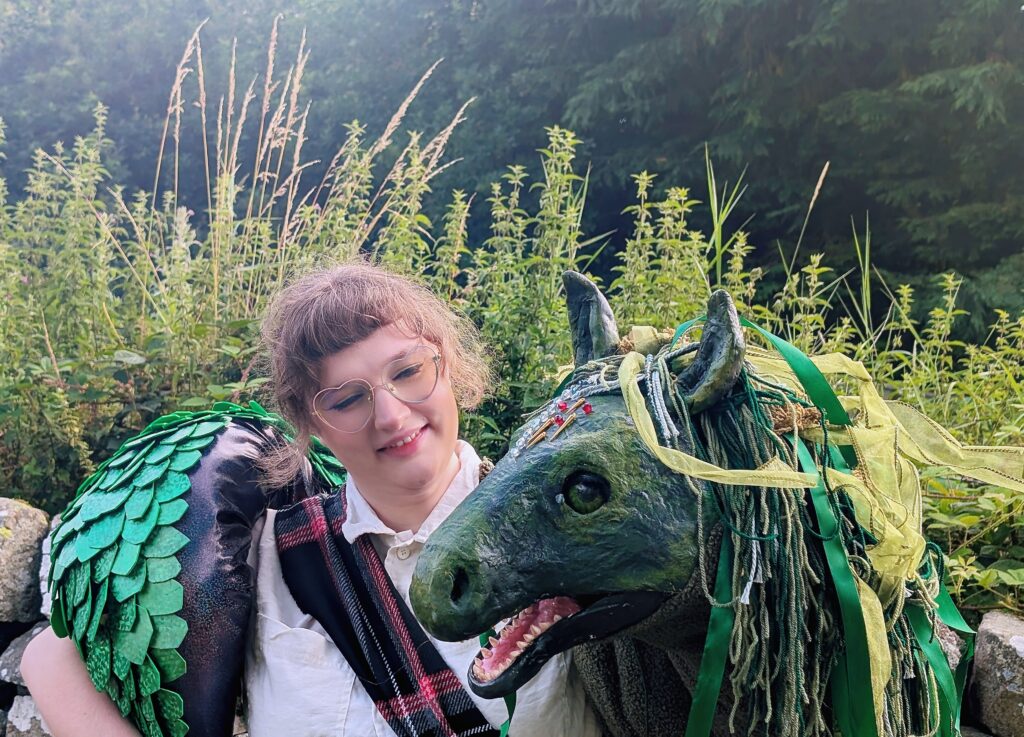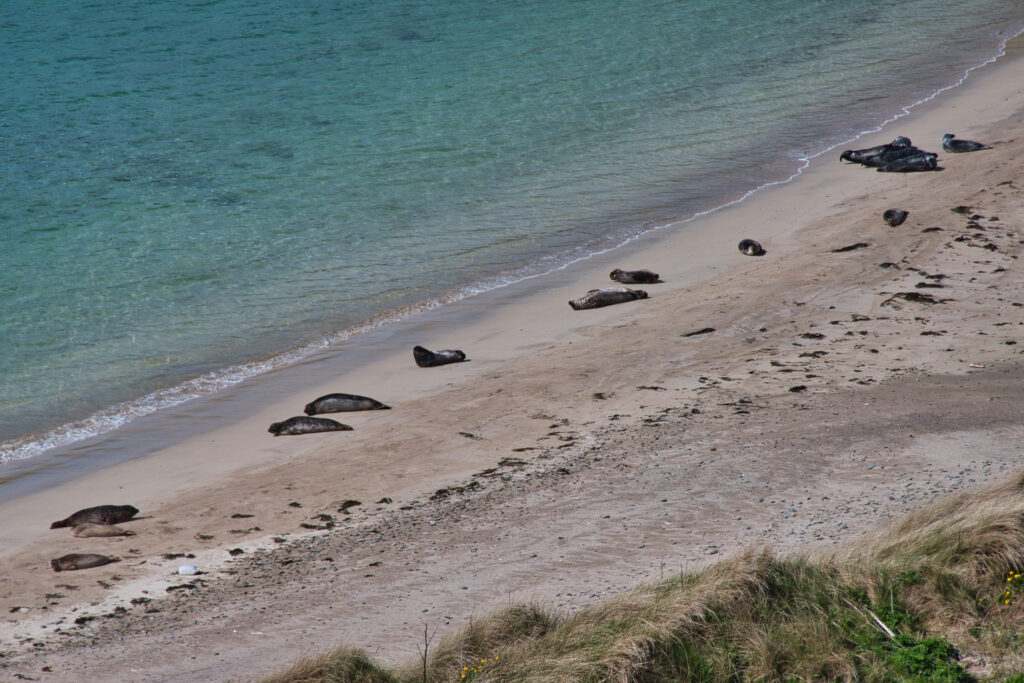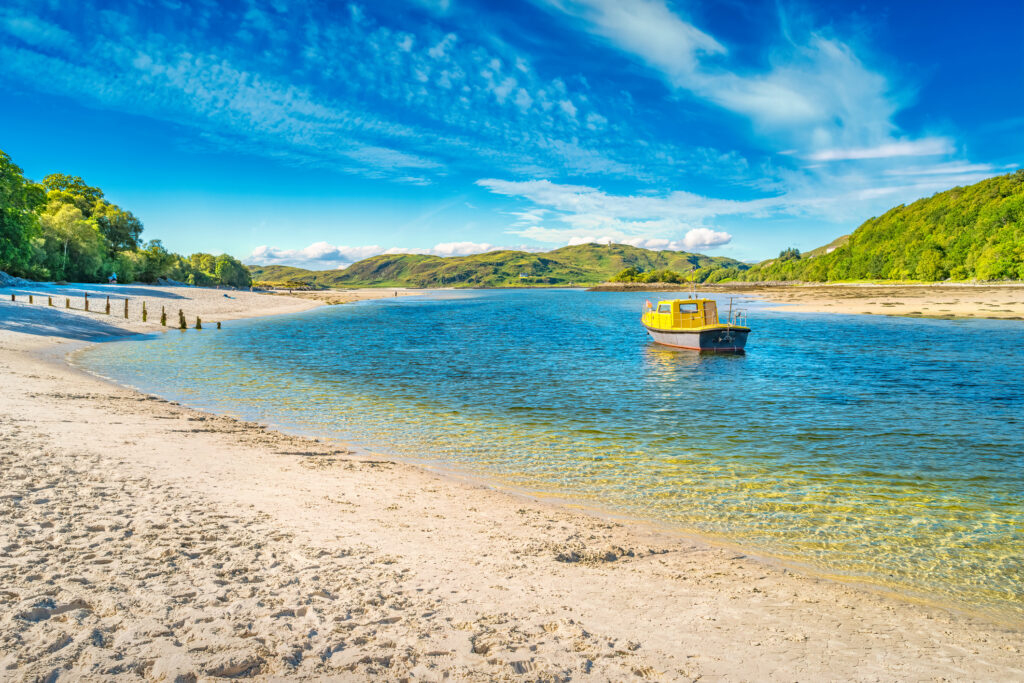The ocean is always moving and changing, with riptides developing and storms that could cause havoc for a passing ship. It’s the perfect habitat for millions of marine life, from sea urchins and coral reefs, to beautiful rays and sinister sharks. But according to historic legends, there’s much more going on than you might think.
Scotland is well-known for its historic background in myths and legends, both on water and on land. Myths are stories created by early civilisations to help make sense of natural events and facts discovered. Some are rooted in truth, while others are completely fictional. Meanwhile, legends are stories passed down through generations that usually can’t be verified. The retellings of legends can often alter slightly, giving them exciting twists and turns over time. Let’s explore the ones originating from Scotland…
Myths and legends from Scotland
The Scottish lochs, hills, coastlines and castle ruins are the starting points for many of the most popular myths and legends. Let’s explore some of these, including where exactly they might’ve originated and how the stories have developed in Scottish history.

Kelpies
What is a Kelpie?
You might know about the famous ‘Kelpies’ horse head sculpture in Falkirk, but you might not know that they represent dangerous mythical Scottish water spirits. Their name is thought to have originated from the Scottish Gaelic words ‘cailpeach’ or ‘colpach’, meaning heifer or colt, respectively.
Kelpies are masters of deception, being able to appear in both human and horse form, often lurking in deep bodies of water. They’re part of the ‘Fair Folk’ or fairies, as you might know them better – but not the romanticised version from the Victorians with wings – fairies in Scottish folklore tend to be scary and fearsome creatures to avoid!
Kelpie mythology
As the legend goes, Kelpies hide in deep lochs, rivers, and on the water’s edge, waiting for unsuspecting hikers wanting to cross the water to take the opportunity and climb on the horse’s back. Once they’re on what they thought was a horse, they become stuck to the magical fur so that they can’t climb down, and the water spirit will then gallop into deep water to drown and eat them.
It’s also said that they can summon floods to sweep their victims away with their magical powers, and that they’re servants of the devil himself, with their powerful bridles gifted by him that are the source of their power. Many folk heroes over the years have been able to trick clever kelpies.
Selkies
What is a Selkie?
According to the myths, a selkie can shed its sealskin to transform from a seal to a human, and can also change back again. Its name comes from selch’ or ‘selk(ie)’, which are simply the Scottish words used for seals in the Orkney and Shetland Islands.

Selkie mythology
The Selkie mythology is deeply rooted in Orkney Island culture, although they’re believed to be found all across Scotland.
One of the most famous legends is about a man who spots a Selkie woman in her human form sunbathing on the beach with her sealskin by her side. The man steals the sealskin and holds her captive as a human for years, during which time it’s said she often looked longingly out to the water. Eventually, she discovers where her sealskin had been hidden and escapes to the sea wearing it, never to be seen again.
The Loch Ness Monster
What is the Loch Ness Monster?
Also affectionately known as Nessie, the Loch Ness Monster is arguably one of the most infamous mythical creatures in the world. Many reports have been logged of sightings throughout history, with the earliest written record of a sighting in 565AD. Because of this and the dark waters, descriptions, reported size and even the creature’s activity all vary widely. Some describe it as a sea serpent-like creature, while others give a description more closely resembling a whale.
Loch Ness Monster mythology
The lesser-known part of the legend starts with how Loch Ness was created in the first place. The tale suggests that the Celtic Winter Queen (also known as goddess Dark Beira or Cailleach Bheur) turned her maid Nessa into the river Ness after she turned up late for her duties. When she eventually escaped the confinement of the river, the water stretched out for miles, becoming the Loch Ness.
The fame of the Loch Ness Monster has created a tourist attraction that’s still popular to this day, with people flocking from all over the world to see if they can catch a glimpse of Nessie in the water. But before the tales of Nessie, it was rumoured that a Kelpie was the original monster stalking Loch Ness!
Morag
What is Morag?
Just 70 miles from Loch Ness is Loch Morar, which is said to be the home of Morag – another mythical sea monster. Some even refer to her as Nessie’s sister!
Similar to the Loch Ness Monster, several sightings of Morag have been reported since the late 1800s, all with varying descriptions of her appearance and behaviour. The most common description gives her a small head, long neck and large body.
Morag mythology
The loch has a legend of sailors going missing in suspicious circumstances, but some believe this is just because it’s a large body of water with only one real access point. The legend of Morag isn’t as famous as Nessie, mainly because it hasn’t been capitalised like the Loch Ness Monster.

Blue Men of Minch
What are the Blue Men of Minch?
Only found in the Minch – a stretch of water between the Scottish mainland and the Outer Hebrides – these creatures are thought to be a particular type of Kelpie. Their name should be taken literally, since they look similar to humans but have blue skin. They also have grey faces, long arms and a green tinge in their beards. But what they’re best known for is their incredible strength and being a creature for humans to fear.
Blue Men of Minch mythology
When the Blue Men aren’t happy, they’ll make it known. With the power to cause turbulence and destructive storms at sea, the tales tell of sailors being violently rocked as they were surrounded by the Men and chased until they managed to pull the ship’s hull underwater.
Ceasg
What are Ceasg?
Ceasg have the upper body of a woman and the lower body of a salmon, making them mermaid-like creatures. Living in the Lochs around Scotland, they have shimmering scales and beautiful voices to help them lure in unsuspecting passers-by.
Ceasg mythology
As the legends go, Ceasg can grant blessings or curses depending on her mood. But with an unpredictability coming from the energy of the Scottish waters, she represents the beauty and peril of nature. Those brave enough to capture a Ceasg are said to have been able to ask for three wishes to be granted, but the legend warns that you should approach at your own risk.
From mythical monsters to shape-shifting creatures, we hope you’ve enjoyed delving into the world of Scottish myths and legends.
Although our resident seals (probably) aren’t mythical selkies, you can still enjoy a visit to the Seal Rock exhibit on your next visit to Deep Sea World. Buy your tickets in advance to avoid disappointment!
